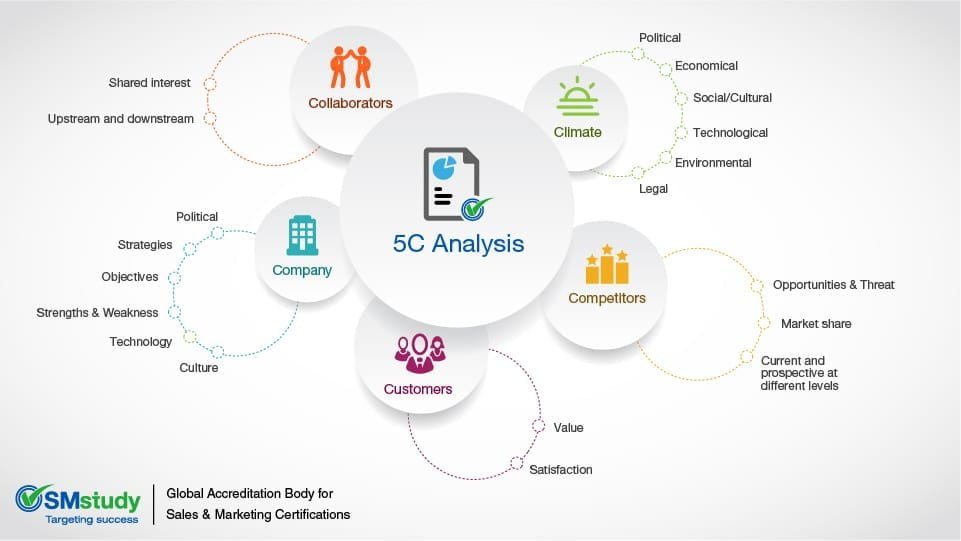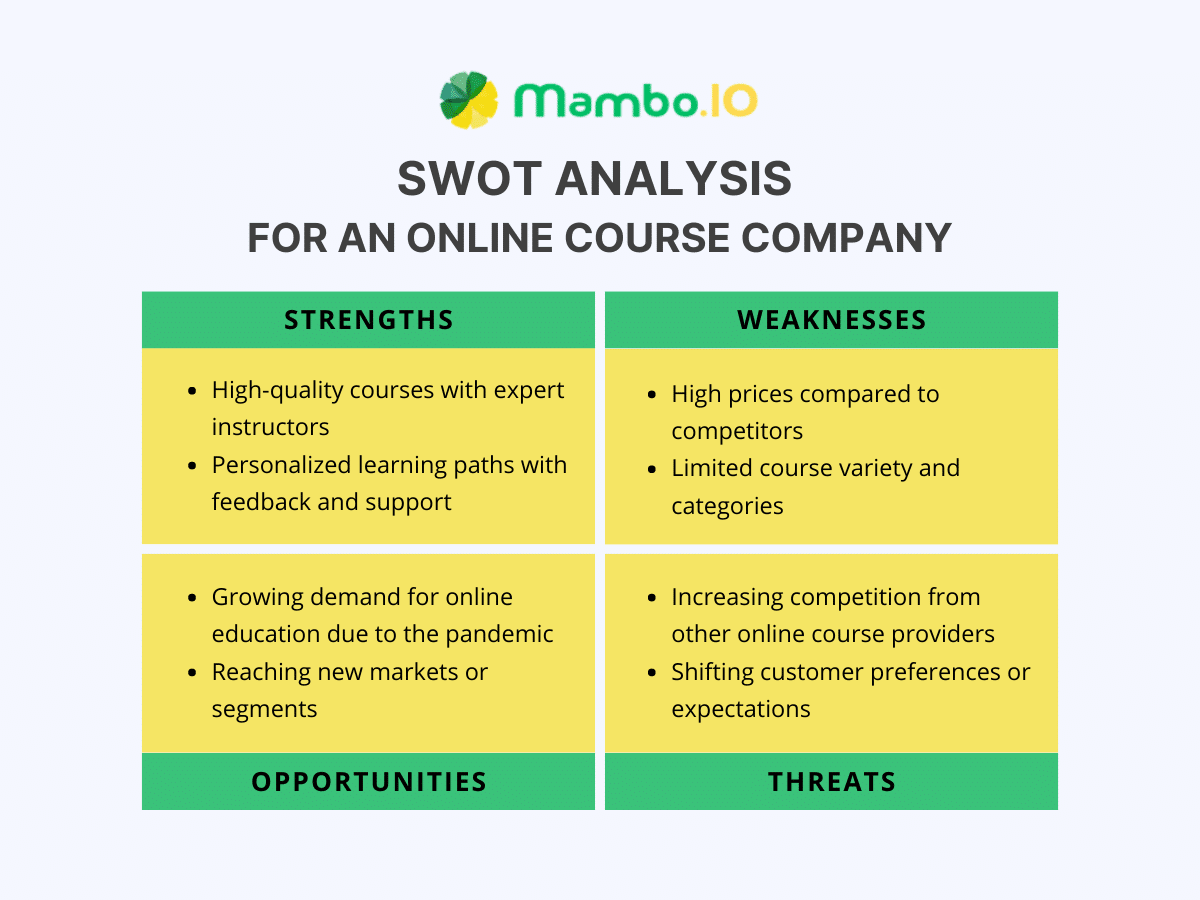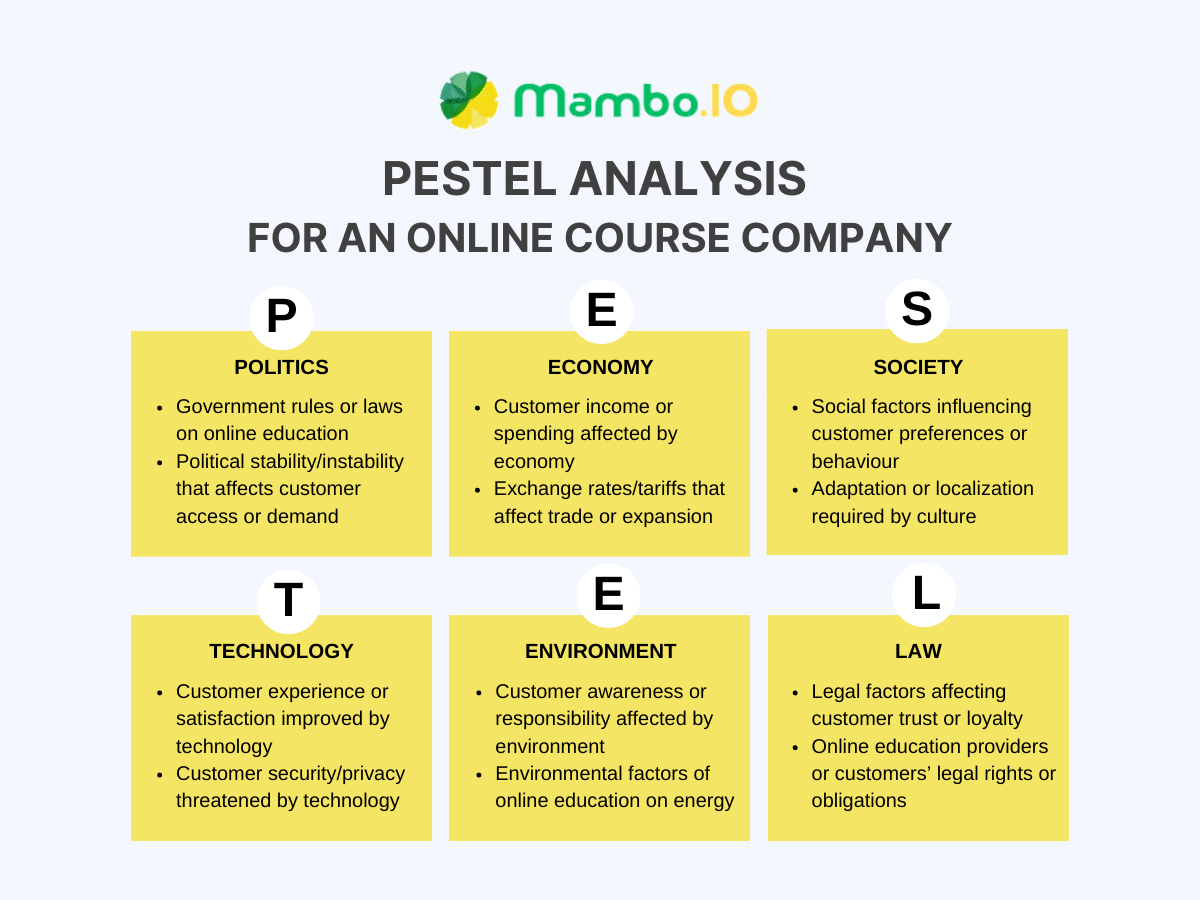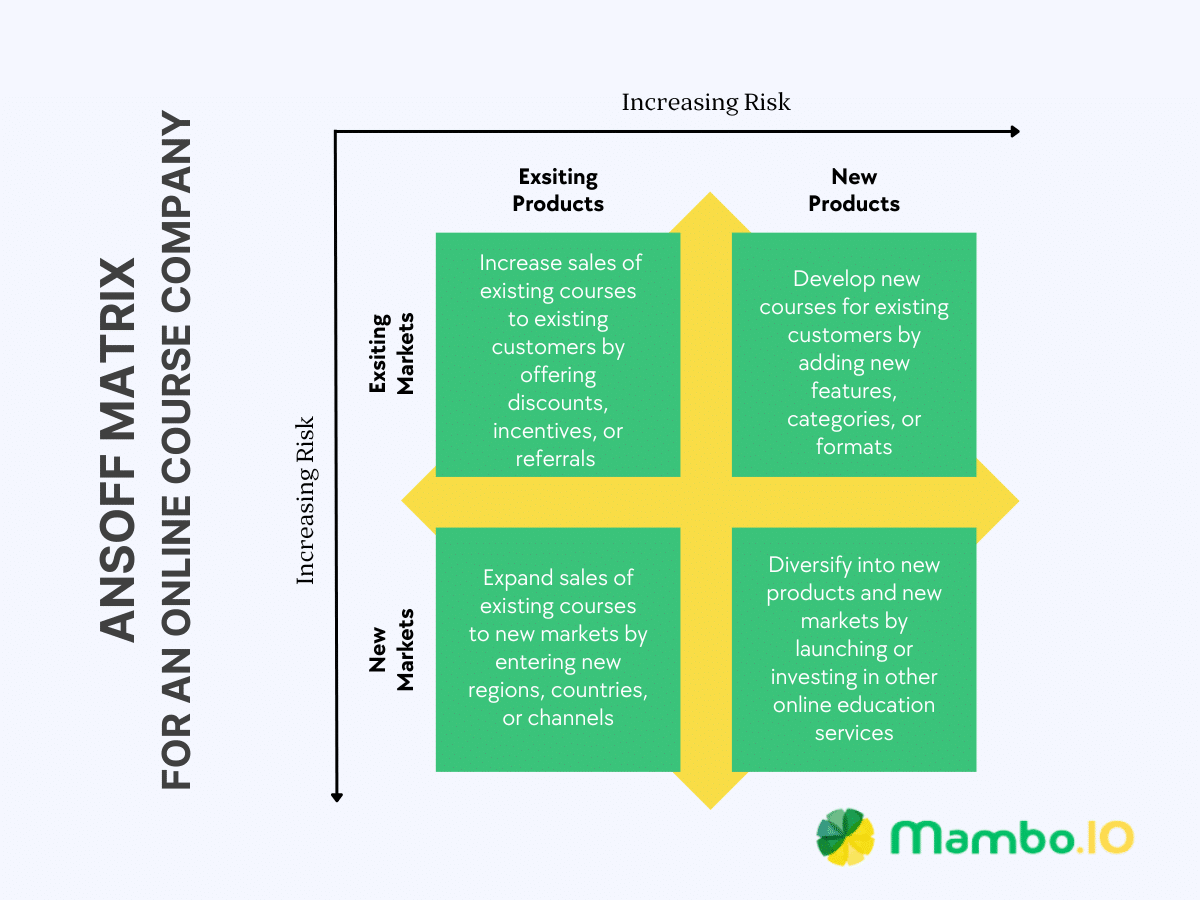The Ultimate Guide to 5C Analysis of Marketing for Product Managers
5C Analysis is a technique that helps you evaluate your product’s market environment comprehensively and systematically. It lets you examine the key factors influencing your product’s performance and opportunities.
Using this, you can discover your product’s strengths and weaknesses, opportunities and threats, and strategic options.
This article will show you how marketers conduct a 5C analysis to improve their products. As a product manager, you will learn how marketers do a 5C Analysis for your product. It will explain how it can help you improve your product management skills.
The 5 c’s analysis is a powerful tool that helps you understand and assess the key factors that affect your product’s performance and market potential.
Table of Contents
- What is the 5C analysis?
- The 5 C’s marketing situation analysis model
- How marketing managers conduct a 5C analysis?
- Tips for an effective 5C analysis
- Conclusion
- Machine Learning In Finance: 12 Essential Applications
- How To Create Interactive Compliance Training For Bank Employees
- How Fintech Apps Are Using Gamification To Increase User Engagement
- Top Gamification Companies for Employee & Customer Engagement
What is the 5C analysis?
With the 5C Analysis, you can analyse the environment in which your own business model operates. This marketing framework helps you explore the most critical factors and relationships that affect your success and market opportunities.
You can also gain valuable insights and make informed product and business decisions about your marketing campaigns, efforts, and strategies.
The 5C Analysis can helps you assess your internal capabilities and external opportunities. Marketers can analyse their target audience and preferences, competitive landscape, and challenges.
It helps them examine potential partners and their contributions, environmental factors, and implications.

Source: SMstudy
Who created the 5C Analysis?
The 5C Analysis is based on the 3C model, created by Kenichi Ohmae, a Japanese strategic management expert. The 3C’s model only covers three elements: Company, Customers, and Competitors. The 5 C’s of marketing analysis add two more factors: Collaborators and Climate.
These are the factors in a 5C Analysis:
- Company
- Customers
- Competitors
- Collaborators
- Climate
These five factors can help you analyse your situation. By doing 5C Analysis, marketers can discover their competitive advantage—their target audience’s needs and expectations.
It also helps the marketers determine the challenges and risks, what competitive advantages your competitors offer, potential collaborations, and your adaptability to changes.
The 5 C’s marketing situation analysis model
#1. Company
The first factor to analyse is the company itself. This involves a company analysis and assessing the internal strengths and weaknesses of the company, as well as its goals and objectives.
Questions to ask in a 5C analysis for the company
- How do the company’s distinctive skills and strengths set it apart from its competitors?
- How does the company gain an advantage over its competitors?
- What goals is the company pursuing at present?
- What products or services does the company offer at present?
- How do the target audience and stakeholders perceive the brand’s image?
- What difficulties and issues does the company currently encounter?
Example:
Amazon, the world’s biggest e-commerce firm, provides a range of products at a reasonable cost using advanced technology and speedy delivery.
The company excels in the latest innovations and customer service. It aims to grow globally, diversify, gain market share, and retain customers. However, the report shows that the company faces regulatory counterfeits, quality control challenges, and competitive challenges.
#2. Customers
The second factor of 5C analysis is customer analysis. This involves identifying and segmenting the target audience across multiple industries and market segments the company serves or intends to serve.
It also involves understanding their needs, preferences, behaviours, and perceptions.
Questions to ask about your customers or target audience
- How do you determine who your current and potential customers are?
- What techniques do you apply to divide your target audience into categories by demographics, psychographics, geography, or other criteria?
- What do they need, desire, expect, and struggle with?
- How do your customers compare your products or services with your competitors?
- What criteria and preferences do they have for making purchases?
- How do they interact with you, and what are their favourite channels?
Example:
Spotify is a music service that segments customers using their data and machine learning to recommend personalised songs, podcasts, playlists, and radio stations. It has different plans and prices for different customer needs and wants.

Source: Spotify
#3. Competitors
The third factor is analysing the competitors. This involves gaining competitive advantages by identifying and evaluating current and potential rivals.
Competitors that offer similar or substitute products in the same market segments as the company. It also involves understanding their strengths, weaknesses, strategies, and tactics.
Questions to ask about your competitors to identify your competitive advantage
- With whom are you directly and indirectly in competition?
- What differentiates their offerings from yours, and what do they offer their customers?
- What do they excel and struggle at?
- What are their plans and actions, or strategies and tactics?
- How do they present themselves in the market?
- How do they evaluate their market share, revenue, growth, and satisfaction?
Example:
Coca-Cola company manufactures a variety of beverages. Its competition is primarily from PepsiCo, Nestlé, and Red Bull.
Competitors attempt to outperform them in key areas such as product innovation, brand recognition, distribution network, pricing strategy, and product marketing strategies.
#4. Collaborators
The fourth factor to analyse is the collaborators. Identifying and assessing the external partners and stakeholders that enable or enhance the company’s ability to deliver its products or services is part of this.
These include suppliers, distributors, investors, service providers, business partners and other entities directly or indirectly impacting the company’s value, supply chain, and business operations.
Questions about your collaborators to assess how the business operates
- Who are your key collaborators, and what do they do and account for?
- How do you select, manage, and evaluate your collaborators?
- What benefits and drawbacks will you experience working with them?
- In what ways do they support or undermine your edge over your competitors?
- How do they influence your interactions with your customers and competitors?
- How do they adapt to the shifts in the market environment?
Example:
Asana is software that helps teams manage their work. It makes app integrations with partners and stakeholders to enhance its product and reach new customers. Its collaborators include Microsoft Teams, Adobe Creative Cloud, Salesforce, and the Asana Together Program.

Source: Asana
#5. Climate
The fifth factor to analyse is the climate. This involves examining the external factors that affect the company’s performance and opportunities. These include economic, social, cultural, technological, legal, competitive edge, regulatory, and political trends.
Questions about the current climate (which direction is the market heading?)
- What factors influence your customers’ buying decisions?
- How do social and cultural movements shape your customers’ needs and preferences?
- How can you leverage technological trends to improve your products or services?
- In what ways do legal and regulatory elements affect your operations and compliance?
- What are the current political factors, and how do they affect your stability and security?
Example:
McKinsey & Company is a consulting firm that does climate analysis. It helps clients with strategic, operational, organisational, and sustainability challenges. The company studies climate risk and response for different regions and industries.
How marketing managers conduct a 5C analysis?
To perform the 5 C’s of marketing situation analysis, marketers can follow these steps:
#1. Define the scope and objective
Marketing managers must decide what aspect of the product they want to analyse and why. For example, analyse a specific feature, target audience segment, or geographic region.
Their analysis should also have a clear goal or outcome. 5C Analysis could enhance your product’s value proposition, boost customer satisfaction, or penetrate a new market.
Tips:
- Be clear and specific about your scope and objective so that you can concentrate on the most pertinent data and information for your analysis.
- Applying the SMART (Specific, Measurable, Achievable, Relevant, and Time-bound) criteria to determine your scope and objective will help you set clear and realistic expectations for your analysis.
Example: A SMART objective for a company that sells online courses could be:
To increase the number of enrollments by 10% in the next six months by analysing customer base, segments, competitors, and collaborators in the online education market.
#2. Gather data and information
Marketers need to collect relevant and reliable data and information that can help them answer the questions related to the 5 c’s of marketing.
They can use different sources, such as internal reports, product marketing research, customer feedback, competitor analysis, industry reports, and media articles.
Tips:
- Use multiple sources and methods to gather data and information. This will help you avoid bias and ensure validity and reliability.
- Use primary and secondary sources to gather data and information. Primary sources are data and information you collect directly from observations, experiments, surveys, or interviews.
Existing sources, such as reports, articles, social media accounts, or websites, provide data and information that are secondary sources.
Example: A survey that asks the ideal customer about their needs, preferences, behaviour, and perceptions could be a primary source for a company that sells online courses.
A secondary source could be an industry report that provides data on the online education market’s size, growth, trends, and segments.
#3. Analyse the 5 C’s of marketing
The marketing department needs to organise and interpret the gathered data and information. They can use different tools and techniques, such as SWOT analysis, PESTEL analysis, Porter’s Five Forces analysis, and VRIO analysis.
Visual aids like charts, graphs, tables, and maps are also helpful.
Tips:
- To determine the primary factors and connections that influence the business, apply suitable tools and methods for each of the 5C Analysis.
- They can use situational analysis to analyse the company and its competitors. Using SWOT analysis, they can identify the strengths, weaknesses, opportunities, and threats of your and your competitors’ businesses.
Internal factors, such as strengths and weaknesses, affect your performance, while external macro-environmental factors, such as opportunities and threats, determine your potential.
Example: A SWOT analysis for a company that sells online courses could look like this:

#4. Identify key issues and trends
The marketer’s 5C analysis’s primary outcomes and insights should be condensed and emphasised.
The strengths and weaknesses of your product, the opportunities and threats in the market, and your strategic options should be acknowledged. They should also identify the key issues and industry trends you must address or monitor.
Tips:
- Use bullet points or tables to present the key issues and trends. This will help the marketing managers communicate their analysis clearly and concisely.
- To identify the key issues and trends in the climate, marketers can apply PESTEL analysis. This tool helps you examine how political, economic, social, technological, environmental, and legal factors affect the industry.
Example: A PESTEL analysis for a company that sells online courses could look like this:

#5. Develop strategic options
Create and assess various alternatives to help marketers accomplish their goals or fix the problem. Weigh the feasibility, desirability, and viability of each option.
Considering each option’s risks, costs, and benefits would be best.
Tips:
- Use a marketing decision matrix or a scoring model to compare the strategic options. Based on the criteria, choose the best option with this help.
- Use the Ansoff matrix to develop strategic options. The Ansoff matrix is a tool that helps generate and evaluate different alternatives based on the product-market growth strategy.
- It consists of four quadrants: market penetration, product development, market development, and diversification.
Example: An Ansoff matrix for a company that sells online courses could look like this:

Tips for an effective 5C analysis
To conduct an effective 5 C’s of marketing analysis, marketing managers can follow these tips:
-
Be objective and realistic in your 5C analysis.
Do not ignore or exaggerate any data that may support or contradict the assumptions.
For example, consider the weaknesses when analysing the company’s strengths, and vice versa. In analysing the customers’ needs, they must not assume that they are the same as theirs or will never change.
-
Be comprehensive in your analysis.
Marketing managers may include all relevant factors and information affecting the product or opportunities. In studying your competitors, consider established competitors, not only the direct ones but also the indirect ones.
Considering the climate, consider all environmental factors affecting the industry.
-
Be updated and current in your analysis.
Use data and information that reflect the latest market or customer trends. When analysing customers, use data from recent surveys, feedback, or company reviews.
If you are analysing your climate, do not use data from before the pandemic but rather from the current situation.
-
Marketers should be flexible and adaptable in their 5C analysis.
Refrain from sticking to a rigid or fixed framework that may not suit their specific situation or context.
For example, in analysing the company, they should use different criteria for every product or service and tailor them to each.
-
Be creative and innovative in your analysis.
Use innovative methods and the latest new or emerging technologies to analyse. It should capture your products, ideal customers, or the market’s complexity or uniqueness.
For example, marketers should use more than demographic or geographic segmentation in their marketing decisions and study customers. Try psychographic or behavioural segmentation.
If they check the direct competitors, use more than market share or profitability, and test customer satisfaction or loyalty.
Conclusion
Product managers can benefit from the 5 C’s of marketing analysis done by marketing managers. This analysis can give them valuable insights and information about their company’s operating environment.
However, with limited data and resources, 5C Analysis analysis can be challenging and time-consuming.
This is where Mambo can assist you! We can help you in achieving any of your marketing efforts and objectives. Whether you run a finance or retail business, launch a startup, or manage a product at a big corporation, Mambo can support you!
To learn more about how Mambo can help you with your engagement analysis and strategies, contact us today and sign up for a free demo.
Download your free
“Gamification Guide”
Get your PDF now and start transforming your approach to digital engagement!
Latest Posts
Machine Learning In Finance: 12 Essential Applications
The impact of machine learning on finance is significant. Thanks to this technology, financial institutions are now equipped to make efficient decisions. Through the analysis of data sets, machine learning […]
How To Create Interactive Compliance Training For Bank Employees
Banking compliance training isn’t just another task. It’s the stage where everything else performs. Banks must navigate a myriad of regulations and laws. After all, this is a trust-driven, high-stakes […]
How Fintech Apps Are Using Gamification To Increase User Engagement
Discover how gamification in fintech is revolutionizing financial engagement, making banking fun & boosting user loyalty.





